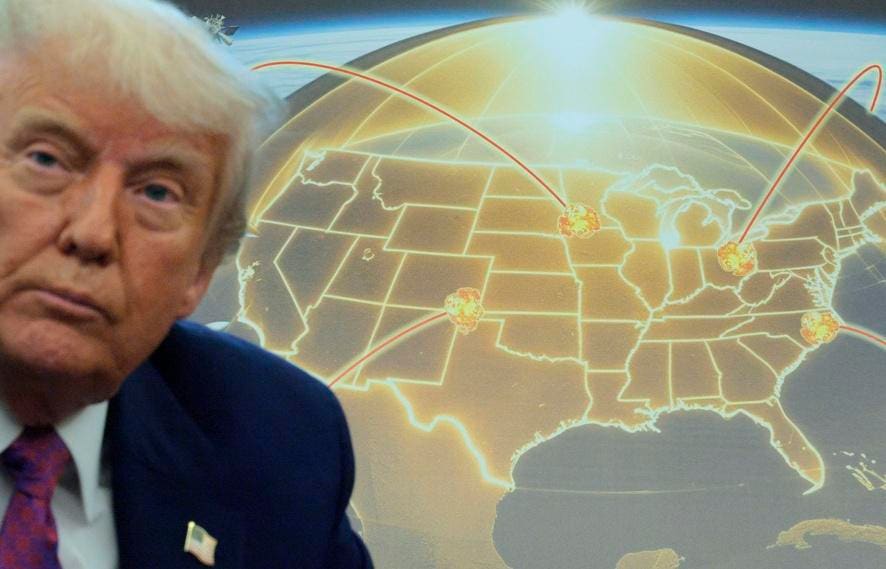WASHINGTON, DC – MAY 20: U.S. President Donald Trump speaks in front of a map of Trump’s proposed … More
The Trump administration has just announced its plans for the development of a multi-faceted “Golden Dome” missile defense system that will be designed to intercept everything from long-range intercontinental ballistic missiles to hypersonic weapons to drones large and small. The ultimate price of this quest for an all-purpose missile defense system is unknown, but president Trump has charged the Space Force to build one in three years at a price of $175 billion. Given that many of the relevant technologies have yet to be fully developed, nor is there a clear sense of how many interceptors will be needed to have even a minimal capability to intercept incoming missiles, the three year deadline is the very definition of wishful thinking.
The appeal of missile defense is obvious. If we had a foolproof technological shield against missile attacks, our security on that front would be assured without having to trust foreign adversaries to refrain from attacking the United States. But emotional appeal and the ability to develop realistic capabilities are two different thing. When Ronald Reagan announced his Strategic Defense Initiative (SDI) – popularly referrred to as Star Wars – in his famous 1983 speech on the subject, he promised an impenetrable shield that would prevent any enemy ICBM from hitting U.S. territory. But large numbers of scientists quickly pointed out that a foolproof missile defense was not possible, and 7,200 of them signed a petition saying they refused to work on the program for that reason. The scientists’ skepticism has proven to be wise, as tens, perhaps hundreds of billions of dollars spent over the past 40 years trying to develop a viable defense against intercontinenal ballistic missiles (ICBMs) have failed to produce a viable system.
The cold hard truth is that reliably intercepting an ICBM-launched warhead coming in at 15,000 miles an hour, and likely embedded among dozens of decoys, is a bridge to far for any conceivable defensive system. Our current system of ground-based interceptors has failed in nearly half of its tests. And none of those tests have been conducted under realistic conditions. Unlike in a real world attack, in tests to date the origin point of the attacking missile is known, as is the exact time it will be launched. And there are no decoys to complicate the issue.
An honest approach to Golden Dome would acknowledge that there is no perfect technological solution to the problem of a potential ICBM attack, and devote diplomatic energy to establishing communications channels and rules of the road that make sucn an attack as unlikley as possible. And work on other forms of attack, from hypersonic missiles to swarmds of drones, should be on a “fly-before-you-buy” basis, which would postpone production until some real capability has been demonstrated via realistic testing.
Meanwhile, if an adversary engages in worst case planning and assumes that Golden Dome might create some ability to destroy some of their ICBMs, they may choose to invest in more offensive systems to make sure they are not vulnerable to a disarming first strike. Such an action would involve destroying much of the adversary’s nuclear arsenal in a surprise attack, and mopping up whatever is left with defensive systems. As unlikely as this may be, planners who deal in worst case scenarios might decide they need the ability to deal with such a situation. The result would be a classic offense/defense arms race that could push nuclear arsenals back towards Cold War levels while making the use of nuclear weapons more likely.
Absent a more realistic approach and an acknowledgement of the daunting challenges involved, Golden Dome looks more like a marketing concept than a carefully crafted plan to develop new capabilities that align with a sensible strategy. Congress, the media, and the public need to ask some hard questions before we sink billions of scarce resources into a system that will not perform as advertised, and yet might still spark an accelerated arms race.
Read the full article here
